The Truth About Invasive Lionfish
By Reef Environmental Education Foundation staff
Let’s face the facts. Lionfish were introduced into the Atlantic ecosystem by humans. Thus, it becomes the responsibility of humans to clean up this mess. Thankfully there are several ways you can help.
If you see a lionfish while snorkeling or diving, report sightings to the USGS United States Geological Survey or REEF databases. Learn to safely and effectively collect and handle lionfish through special workshops and training sessions. Remove lionfish regularly through local dives and organized removal programs. Compete in Lionfish Derbies and special events. Help develop the commercial lionfish market by eating lionfish at restaurants. Donate to lionfish research and outreach programs.
10 Facts About Lionfish from REEF
Reproduction Lionfish are very fertile. A single female can spawn approximately 24,000 to 30,000 eggs, every four days, year round, amounting to over 2 million eggs released each year.
Venomology Lionfish venom is contained within 18 spines in the dorsal, anal and ventral fins. The venom is a protein-based neurotoxin which is deactivated by heat. First aid treatment for lionfish stings includes cleaning the wound and immersing the affected area in non-scalding, hot water.
Predation Lionfish are capable of consuming prey larger than half their own size. They are gape-limited predators, meaning they swallow their prey whole without chewing and can only eat what can fit in their mouth.
Impacts Lionfish can drastically reduce native fish and invertebrate populations. According to Green et al., lionfish reduced the native fish prey community at some sites in the Bahamas by an average of 65 percent in just two years. Some sites had a 95 percent decline.
Edibility Lionfish are edible, and their light, white, flaky meat is considered a delicacy. Lionfish have higher concentrations of omega-3 (heart healthy fatty acids) than grouper, snapper, tuna or mahi-mahi.
Movement Lionfish exhibit high site fidelity. Tagged fish have been documented at the same coral head seven months after tagging. If you see a lionfish and you don’t have collecting gear, record the location and revisit the site later. It is likely that the lionfish will still be there.
Depths Lionfish inhabit a large range of depths. They have been found in just inches of water along shorelines and in mangroves, and they have been seen from a submersible at 1,000 feet deep.
Therman Tolerance Lionfish are found year-round from North Carolina to South America, bounded only by their wide thermal tolerance. They thrive in the warm waters of the Caribbean and can survive temperatures as cold as 10°C (50°F).
Fasting Lionfish are capable of surviving long periods of fasting. In laboratory experiments conducted by Lev Fishelson, lionfish were starved for three months. None of the lionfish died, and average body mass of larger lionfish (~1lb +) was reduced by only 10 to12 percent.
Population Control Organized diver removals are proving highly effective at controlling local lionfish populations. Lionfish derbies have removed over 2,000 fish in a single day and regular removals on a local scale have been shown to keep lionfish numbers down.
About REEF:
REEF is a grass-roots organization that seeks to conserve marine ecosystems by educating, enlisting and enabling divers to become active ocean stewards and citizen scientists. REEF is at the forefront of applied research and response to the lionfish invasion, addressing the issue by engaging in region wide research and outreach, conducting collecting and handling workshops, organizing removal derbies and facilitating education programs. Serving on numerous state, federal, and international boards and working groups, REEF helps develop and implement effective lionfish control strategies throughout the invaded range.
Report Lionfish to:
REEF Collecting and Handling Workshops:
REEF Summer Lionfish Derby Series:
Contact:
www.REEF.org
98300 Overseas Hwy.
Key Largo, FL 33037
305-852-0030
[email protected]
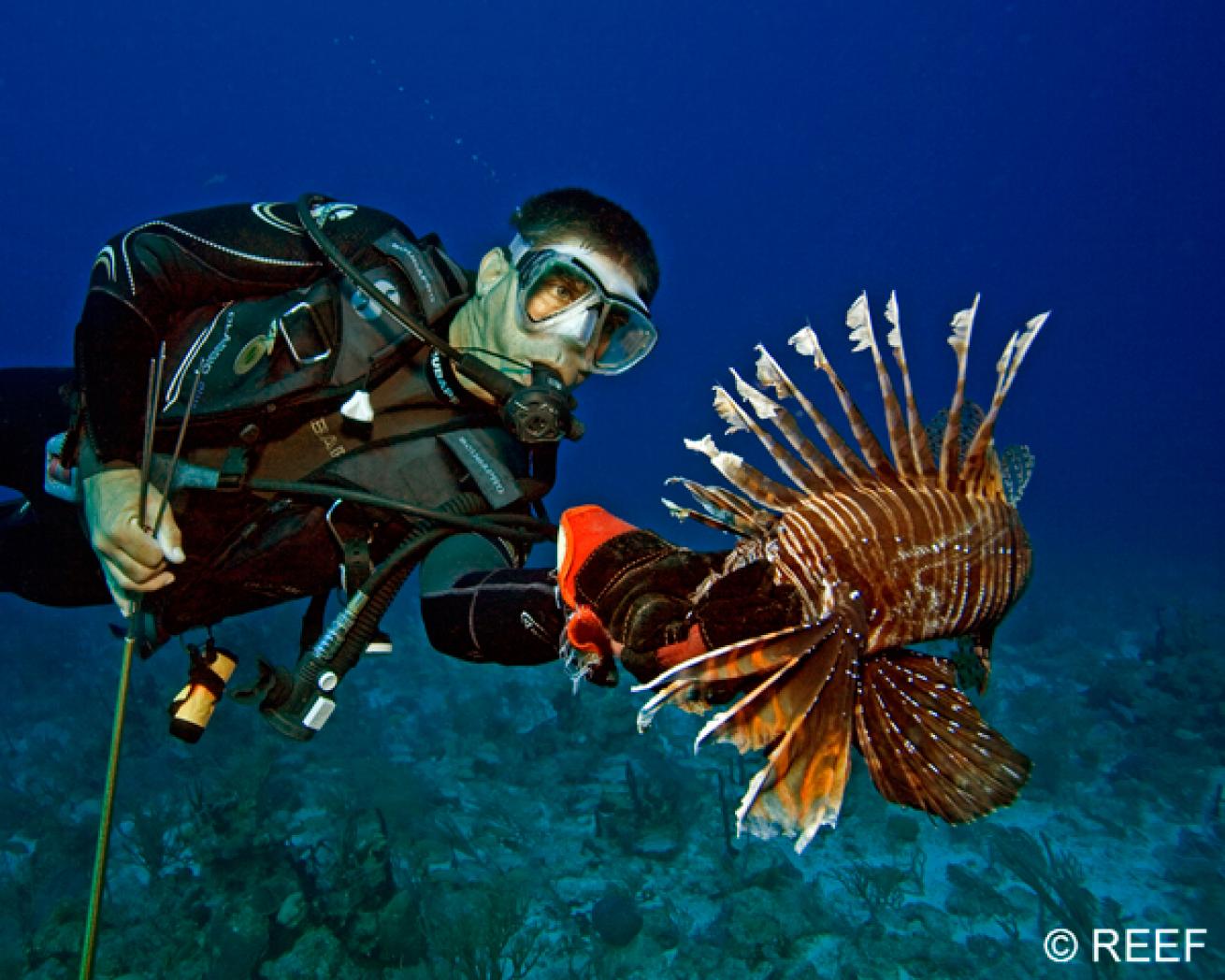
Lionfish are found year-round from North Carolina to South America, bounded only by their wide thermal tolerance. They thrive in the warm waters of the Caribbean and can survive temperatures as cold as 10°C (50°F).
By Reef Environmental Education Foundation staff
Let’s face the facts. Lionfish were introduced into the Atlantic ecosystem by humans. Thus, it becomes the responsibility of humans to clean up this mess. Thankfully there are several ways you can help.
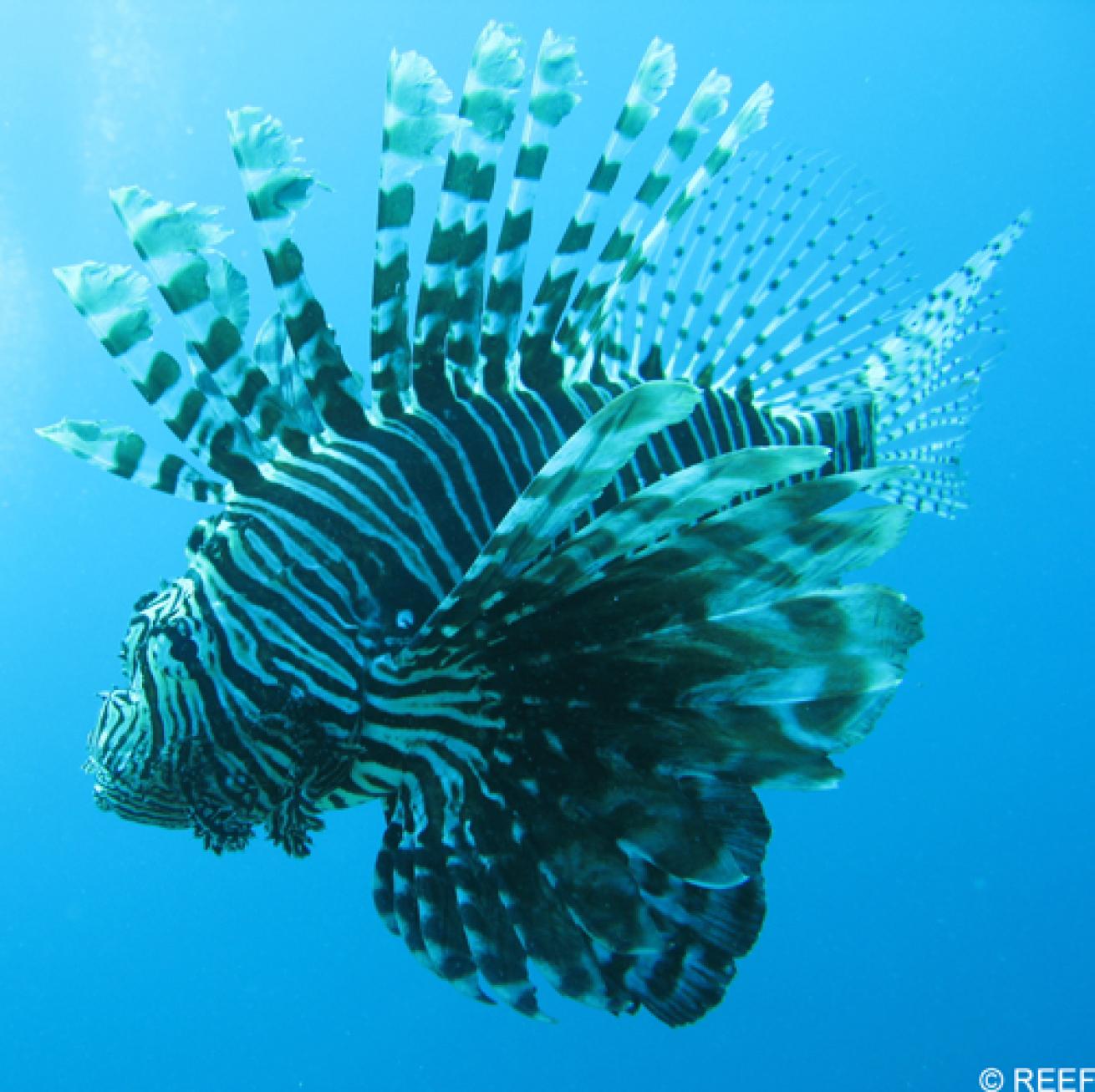
Lionfish inhabit a large range of depths. They have been found in just inches of water along shorelines and in mangroves, and they have been seen from a submersible at 1,000 feet deep.
If you see a lionfish while snorkeling or diving, report sightings to the USGS United States Geological Survey or REEF databases. Learn to safely and effectively collect and handle lionfish through special workshops and training sessions. Remove lionfish regularly through local dives and organized removal programs. Compete in Lionfish Derbies and special events. Help develop the commercial lionfish market by eating lionfish at restaurants. Donate to lionfish research and outreach programs.
10 Facts About Lionfish from REEF
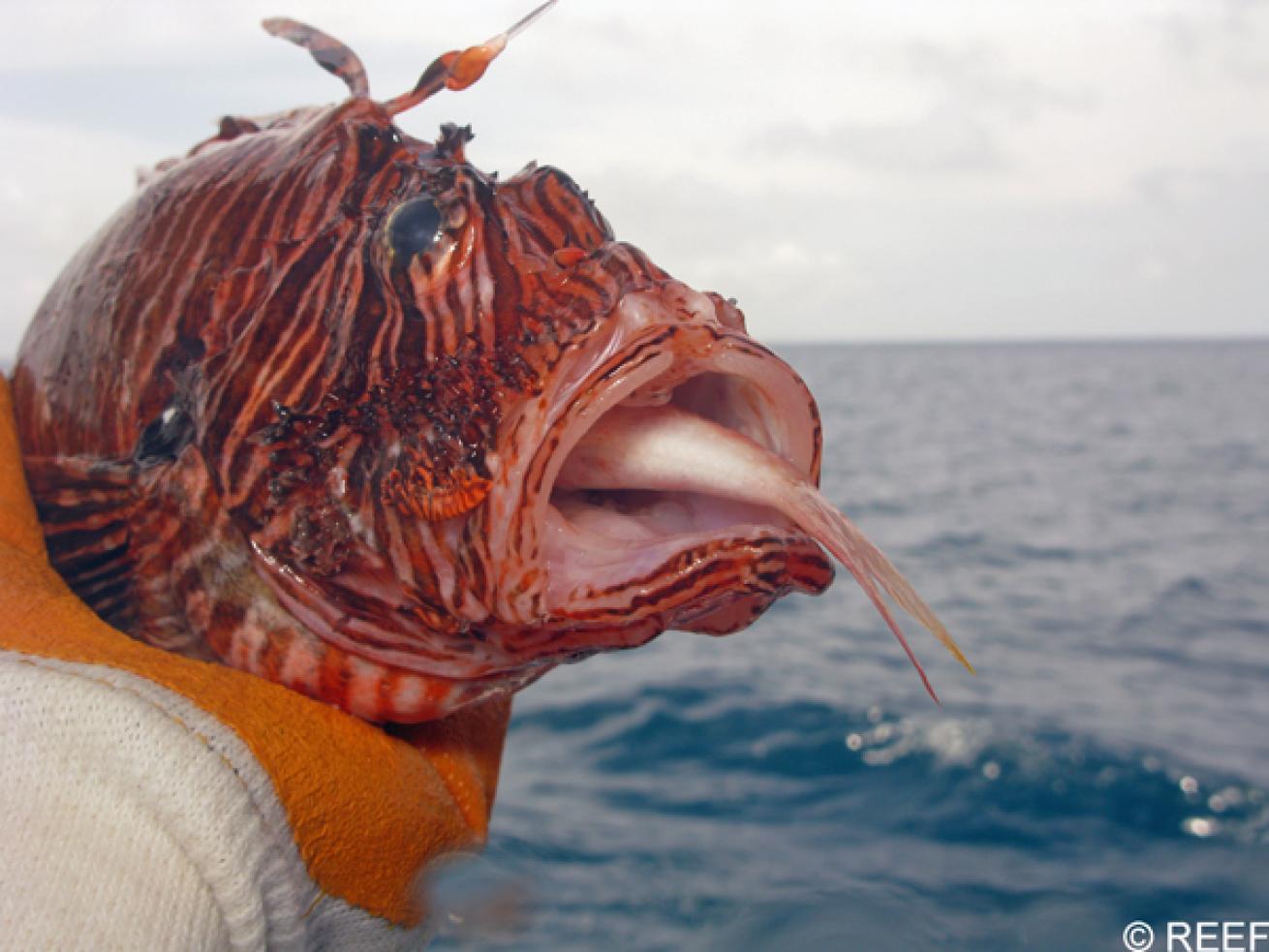
Reproduction Lionfish are very fertile. A single female can spawn approximately 24,000 to 30,000 eggs, every four days, year round, amounting to over 2 million eggs released each year.
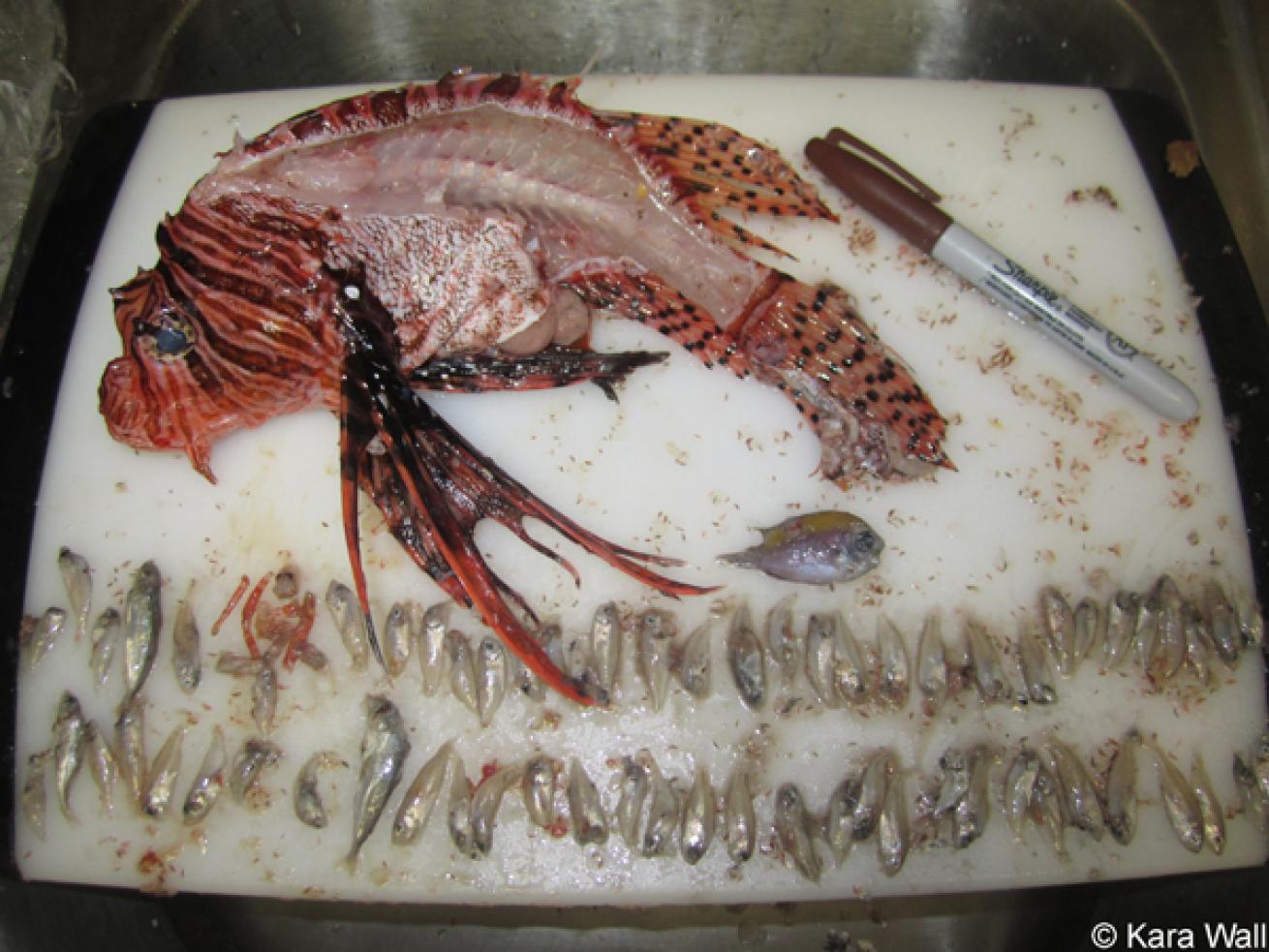
Lionfish are capable of consuming prey larger than half their own size, along with smaller fish in great numbers.
Venomology Lionfish venom is contained within 18 spines in the dorsal, anal and ventral fins. The venom is a protein-based neurotoxin which is deactivated by heat. First aid treatment for lionfish stings includes cleaning the wound and immersing the affected area in non-scalding, hot water.
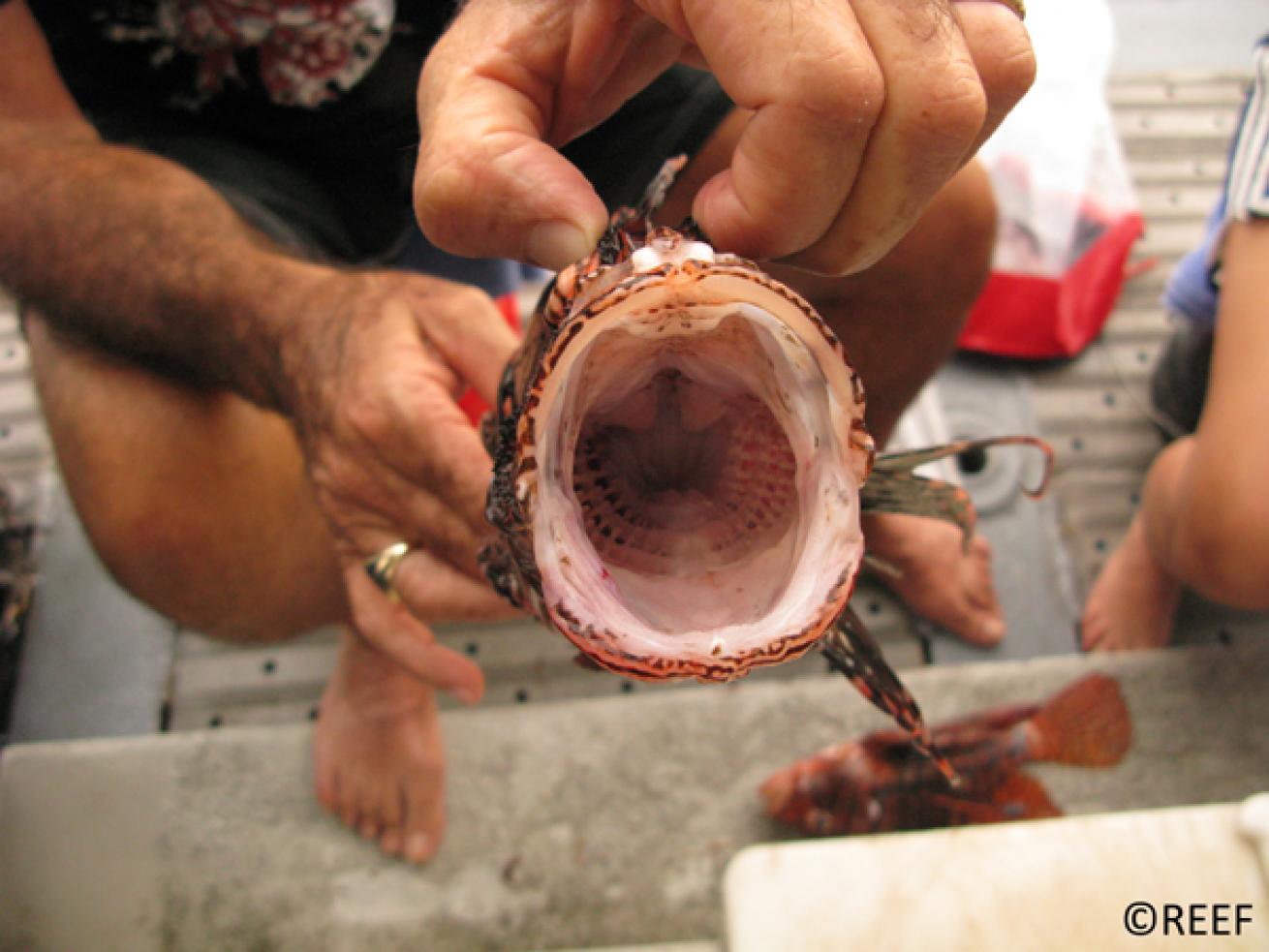
Predation Lionfish are capable of consuming prey larger than half their own size. They are gape-limited predators, meaning they swallow their prey whole without chewing and can only eat what can fit in their mouth.
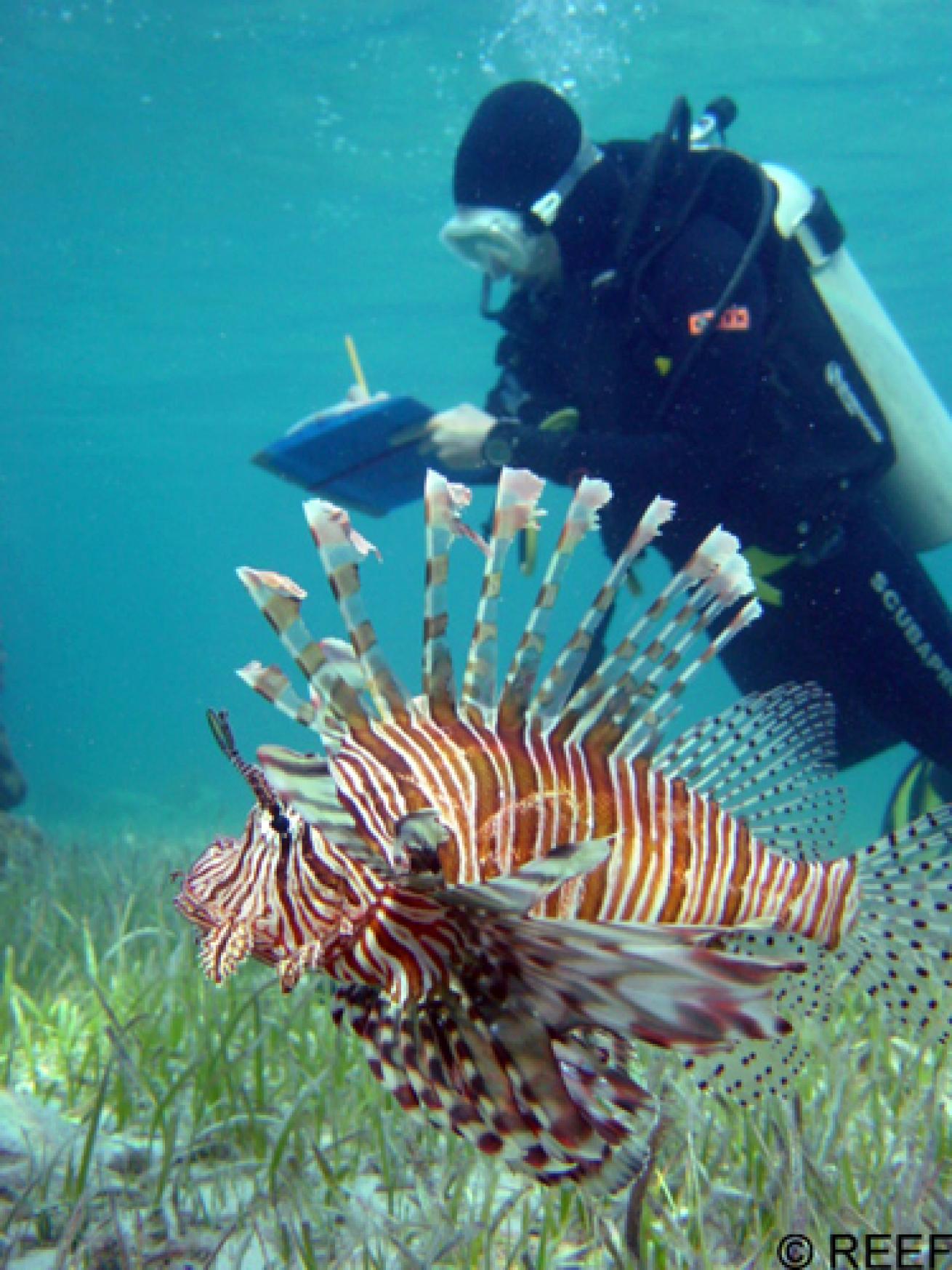
Lionfish exhibit high site fidelity. Tagged fish have been documented at the same coral head seven months after tagging. If you see a lionfish and you don’t have collecting gear, record the location and revisit the site later. It is likely that the lionfish will still be there.
Impacts Lionfish can drastically reduce native fish and invertebrate populations. According to Green et al., lionfish reduced the native fish prey community at some sites in the Bahamas by an average of 65 percent in just two years. Some sites had a 95 percent decline.
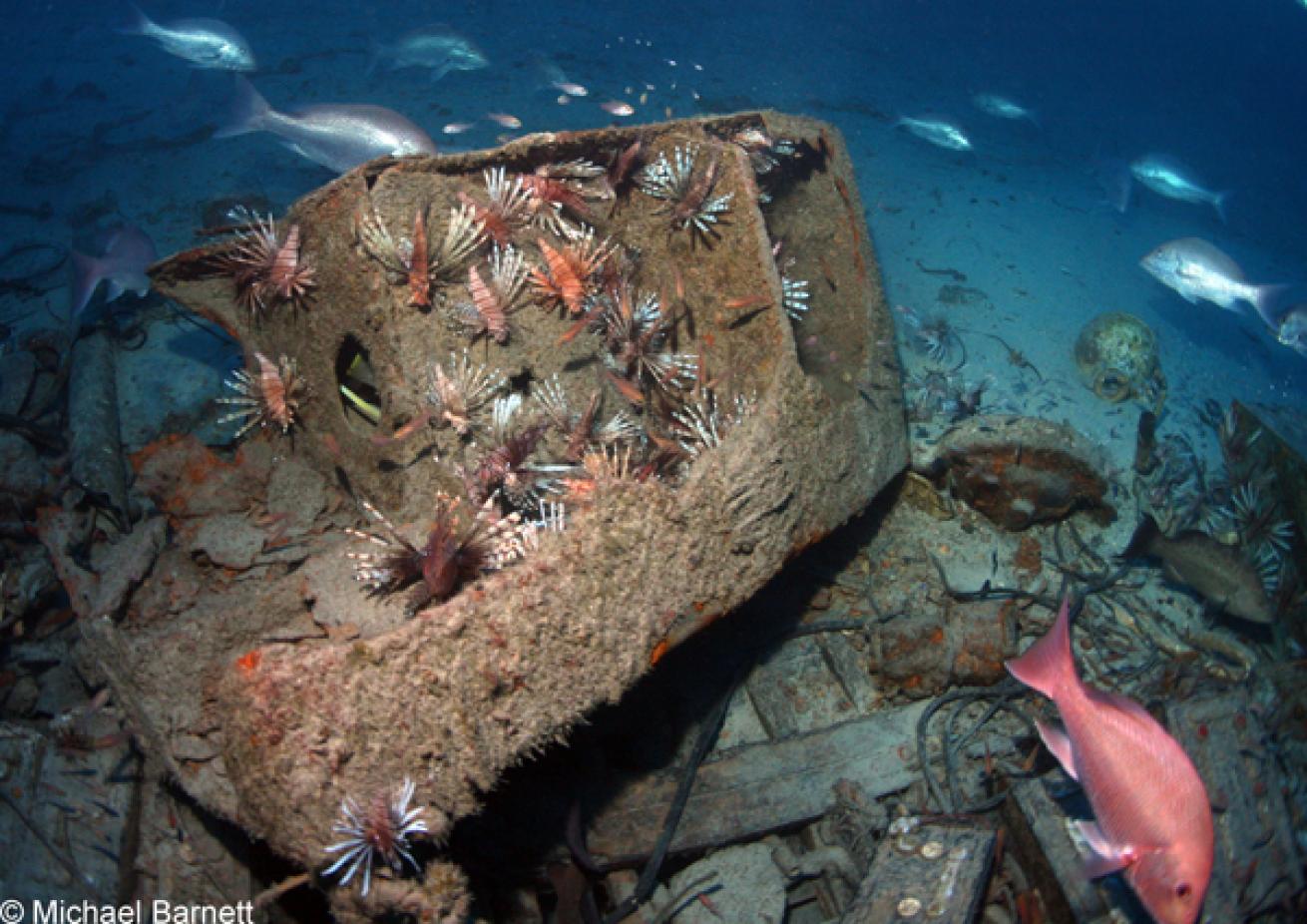
Edibility Lionfish are edible, and their light, white, flaky meat is considered a delicacy. Lionfish have higher concentrations of omega-3 (heart healthy fatty acids) than grouper, snapper, tuna or mahi-mahi.
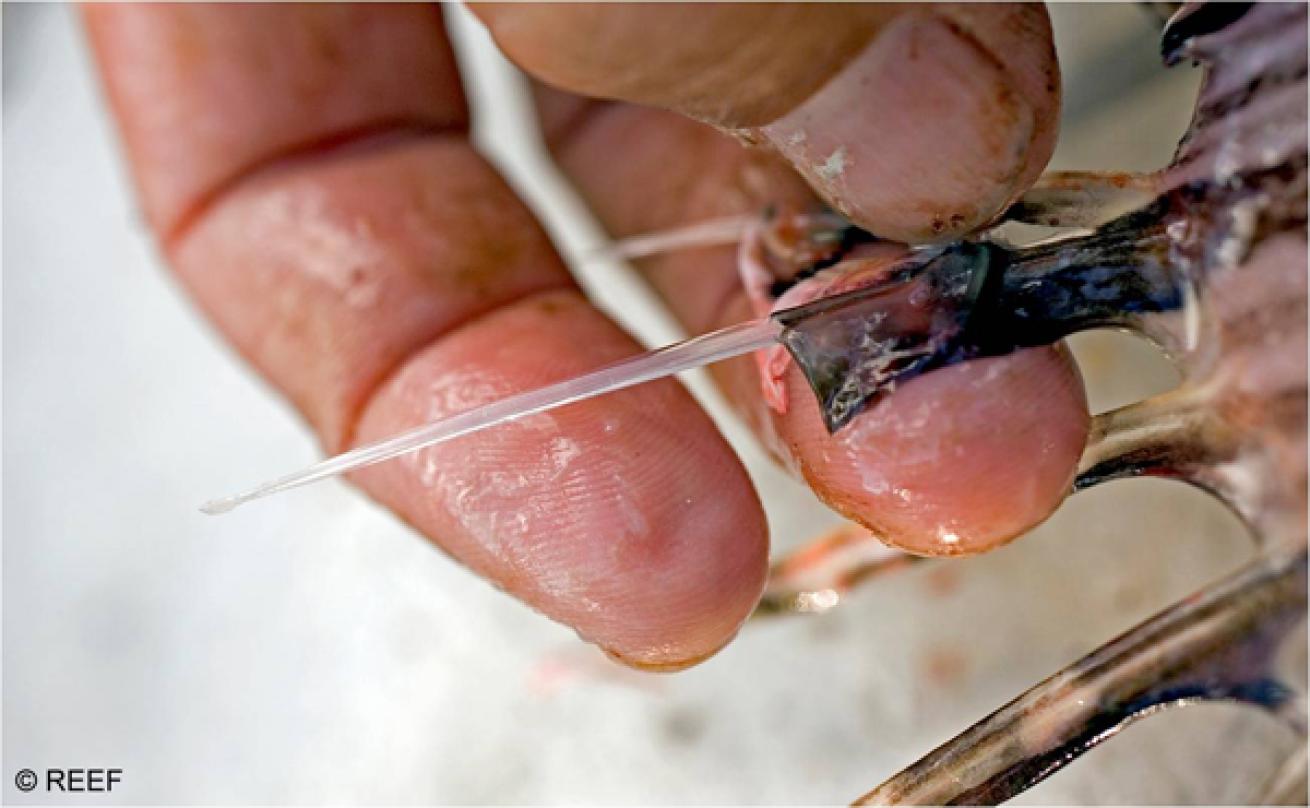
Lionfish venom is contained within 18 spines in the dorsal, anal and ventral fins. The venom is a protein-based neurotoxin which is deactivated by heat. First aid treatment for lionfish stings includes cleaning the wound and immersing the affected area in non-scalding, hot water.
Movement Lionfish exhibit high site fidelity. Tagged fish have been documented at the same coral head seven months after tagging. If you see a lionfish and you don’t have collecting gear, record the location and revisit the site later. It is likely that the lionfish will still be there.
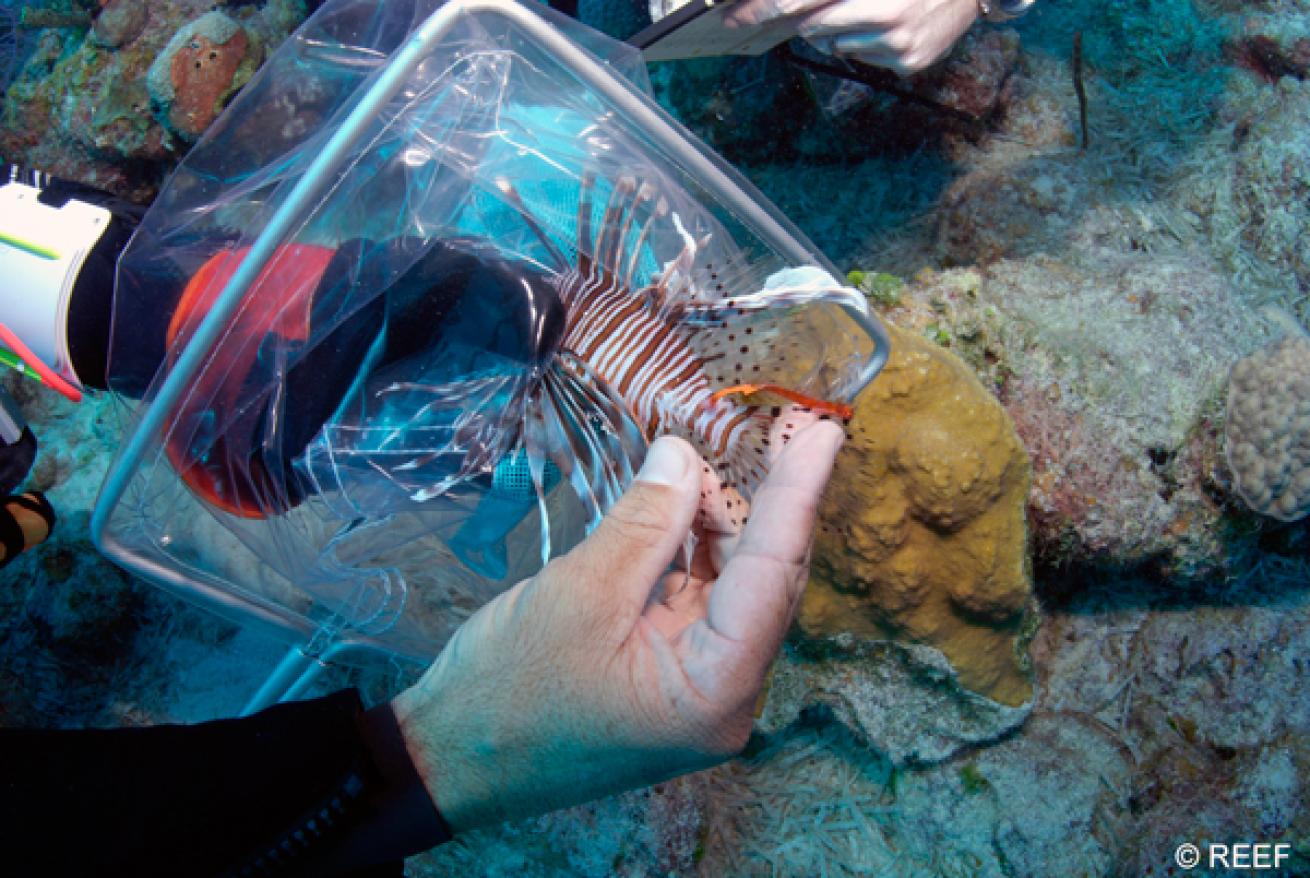
Organized diver removals are proving highly effective at controlling local lionfish populations.
Depths Lionfish inhabit a large range of depths. They have been found in just inches of water along shorelines and in mangroves, and they have been seen from a submersible at 1,000 feet deep.

Therman Tolerance Lionfish are found year-round from North Carolina to South America, bounded only by their wide thermal tolerance. They thrive in the warm waters of the Caribbean and can survive temperatures as cold as 10°C (50°F).

Lionfish are edible, and their light, white, flaky meat is considered a delicacy. Lionfish have higher concentrations of omega-3 (heart healthy fatty acids) than grouper, snapper, tuna or mahi-mahi.
Fasting Lionfish are capable of surviving long periods of fasting. In laboratory experiments conducted by Lev Fishelson, lionfish were starved for three months. None of the lionfish died, and average body mass of larger lionfish (~1lb +) was reduced by only 10 to12 percent.
Population Control Organized diver removals are proving highly effective at controlling local lionfish populations. Lionfish derbies have removed over 2,000 fish in a single day and regular removals on a local scale have been shown to keep lionfish numbers down.
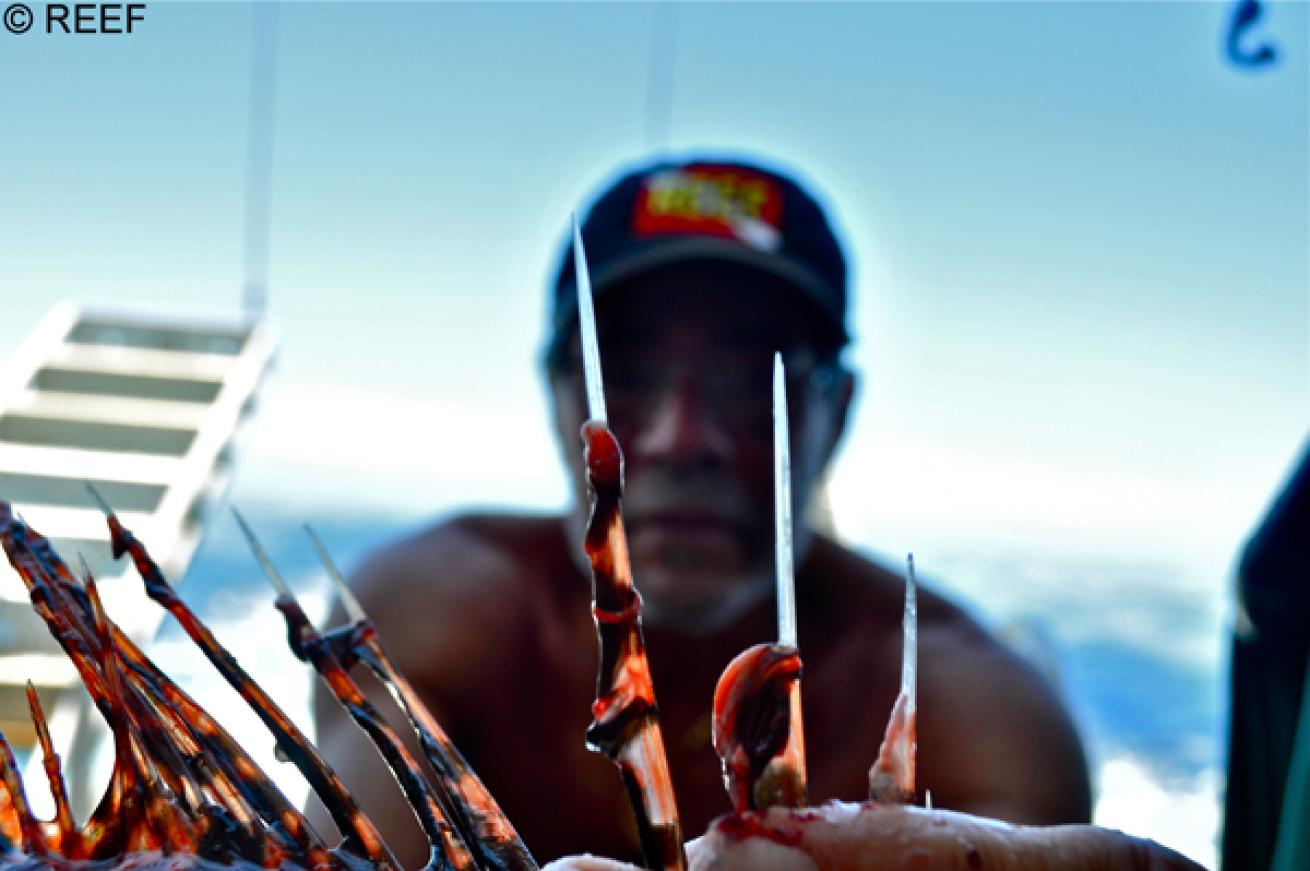
About REEF:
REEF is a grass-roots organization that seeks to conserve marine ecosystems by educating, enlisting and enabling divers to become active ocean stewards and citizen scientists. REEF is at the forefront of applied research and response to the lionfish invasion, addressing the issue by engaging in region wide research and outreach, conducting collecting and handling workshops, organizing removal derbies and facilitating education programs. Serving on numerous state, federal, and international boards and working groups, REEF helps develop and implement effective lionfish control strategies throughout the invaded range.
Report Lionfish to:
REEF Collecting and Handling Workshops:
REEF Summer Lionfish Derby Series:
Contact:
www.REEF.org
98300 Overseas Hwy.
Key Largo, FL 33037
305-852-0030
[email protected]










